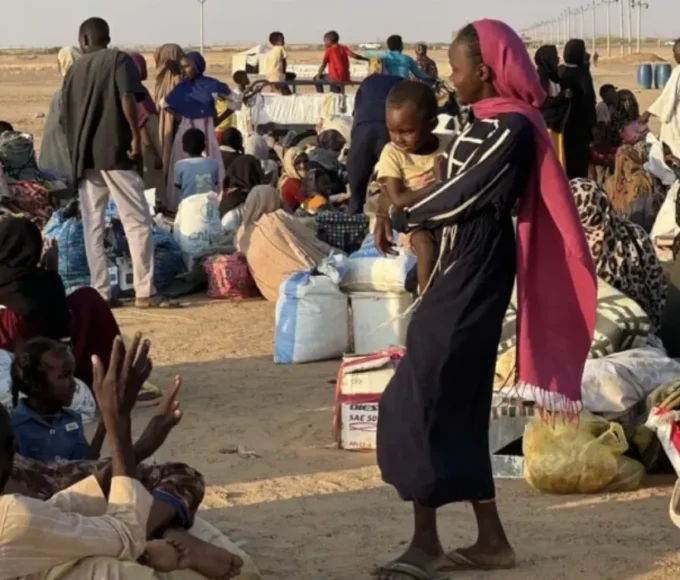Afghanistan’s internet and mobile networks were restored on October 1, 2025, after a sudden nationwide shutdown imposed by the Taliban government caused a two-day blackout. The shutdown, which began on September 29, paralyzed communications across the country of over 40 million people and disrupted banking, businesses, flights, and humanitarian efforts. While the Taliban denied deliberately banning the internet nationwide, citing infrastructure repairs, widespread speculation and international criticism pointed to a politically motivated move aimed at restricting online activity as part of a broader effort to enforce the regime’s moral codes.
Internet Blackout and Its Impact
Scope and Duration of the Shutdown
The blackout lasted approximately 48 hours, cutting off nearly all internet and telecommunications services throughout Afghanistan, including major cities like Kabul, Kandahar, Herat, Ghazni, and Khost. NetBlocks, a digital rights monitoring group, reported that connectivity levels dropped to about one percent of normal levels, effectively isolating the country from the global digital ecosystem.
This was the most extensive communications shutdown since the Taliban’s return to power in 2021.
National Disruptions and Public Reaction
The telecom blackout triggered widespread disruptions: businesses were forced to close, banking and financial services became inaccessible, and flights were grounded with at least 14 cancellations at Kabul International Airport due to failure in air traffic control systems. Schools temporarily halted as families feared for their children’s safety and communication lines were cut.
Afghans endured immense frustration and confusion, unable to contact relatives or access vital information. Many citizens traveled to border regions near Iran and Pakistan to seek cellphone signals and internet access.
When services resumed, celebrations erupted with residents filling streets in Kabul and elsewhere to mark the return of connectivity. One delivery driver likened the moment to Eidul Azha, and many took to buying sweets, honking car horns, and reconnecting with loved ones after days of silence.
Taliban’s Role and Explanations
Official Denials and Claims
The Taliban government denied imposing a deliberate nationwide internet ban. Spokesman Zabihullah Mujahid claimed the outage resulted from technical problems tied to the replacement of old fiber optic cables, labeling reports of an official shutdown as misinformation.
However, sources within the country and experts highlighted that the blackout followed earlier provincial-level internet restrictions enforced under orders from Taliban supreme leader Hibatullah Akhundzada to prevent what the regime termed “immoral activities.” Hundreds of fiber-optic infrastructure points were reportedly disabled or dismantled in recent weeks.
Several local telecom providers expressed frustration at navigating government directives, hoping for quick resumption of full services.
Context of Online Restrictions
The internet shutdown was part of a series of escalating internet censorship measures in Afghanistan since the Taliban returned to power. These have targeted high-speed internet access and social media platforms to regulate content deemed inappropriate under the regime’s strict interpretation of Islamic law, disproportionately affecting women and girls.
Humanitarian and International Responses
UN and Rights Groups’ Condemnation
The United Nations Assistance Mission in Afghanistan issued urgent calls for the immediate restoration of internet services, warning that the shutdown endangered the well-being of millions by exacerbating the humanitarian crisis and straining economic activity.
Human Rights Watch described the blackout as a serious violation of Afghan people’s rights to access information, education, healthcare, and economic livelihood. The shutdown severely limited students’ ability to attend online classes, particularly affecting women already banned from formal education under Taliban rule. Aid agencies reported challenges in coordinating relief efforts due to crippled communications.
Local Impact on Society and Economy
Beyond immediate social dislocation, the blackout jeopardized Afghanistan’s fragile economic recovery, halting commerce, remittances, and government transactions. Flights halted for days compounded travel chaos and economic losses.
Restoration and Moving Forward
Resumption of Internet Services
By October 1, telecom operators confirmed the return of 2G, 3G, and 4G mobile and internet services nationwide, with connectivity restored across key provinces. The return of internet access sparked widespread public rejoicing, signaling a tentative restoration of normalcy.
Ongoing Concerns
Despite restoration, skepticism remains about the Taliban’s commitment to allowing consistent internet access. Many Afghans fear further restrictions as the government continues to enforce strict moral codes and tightens control over information. Activists and international observers warn that communications freedom remains fragile, with repeated internet disruptions threatening progress in the country.
Afghanistan emerging from a two-day internet blackout highlights the critical role connectivity plays in modern societies, especially in conflict-affected and humanitarian-stricken countries. The Taliban’s shutdown exposed vulnerabilities in Afghanistan’s digital infrastructure and highlighted the regime’s increasing control over online spaces under the guise of morality enforcement.
While the restoration of internet services was met with widespread relief and celebration, the episode underscores ongoing challenges for Afghan citizens and the international community in balancing governance, human rights, and access to information in the country’s uncertain future.









